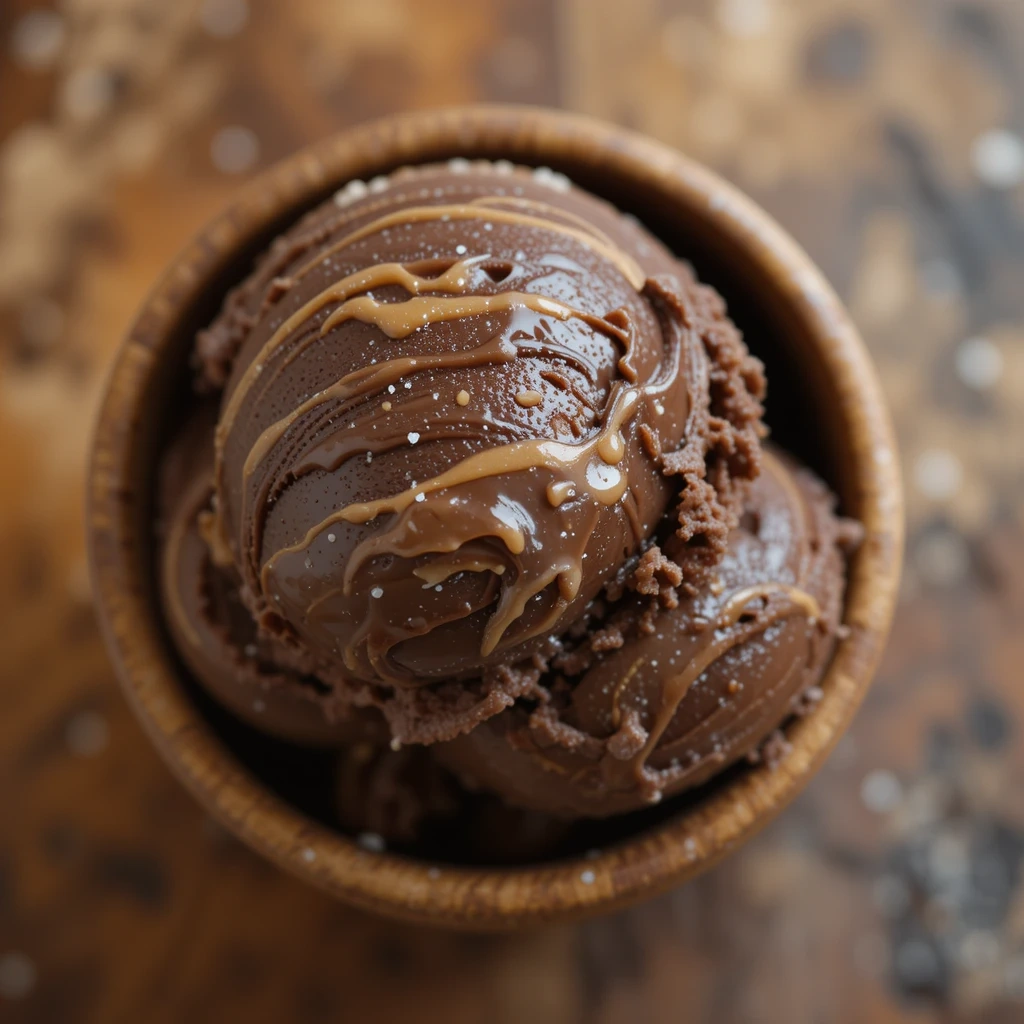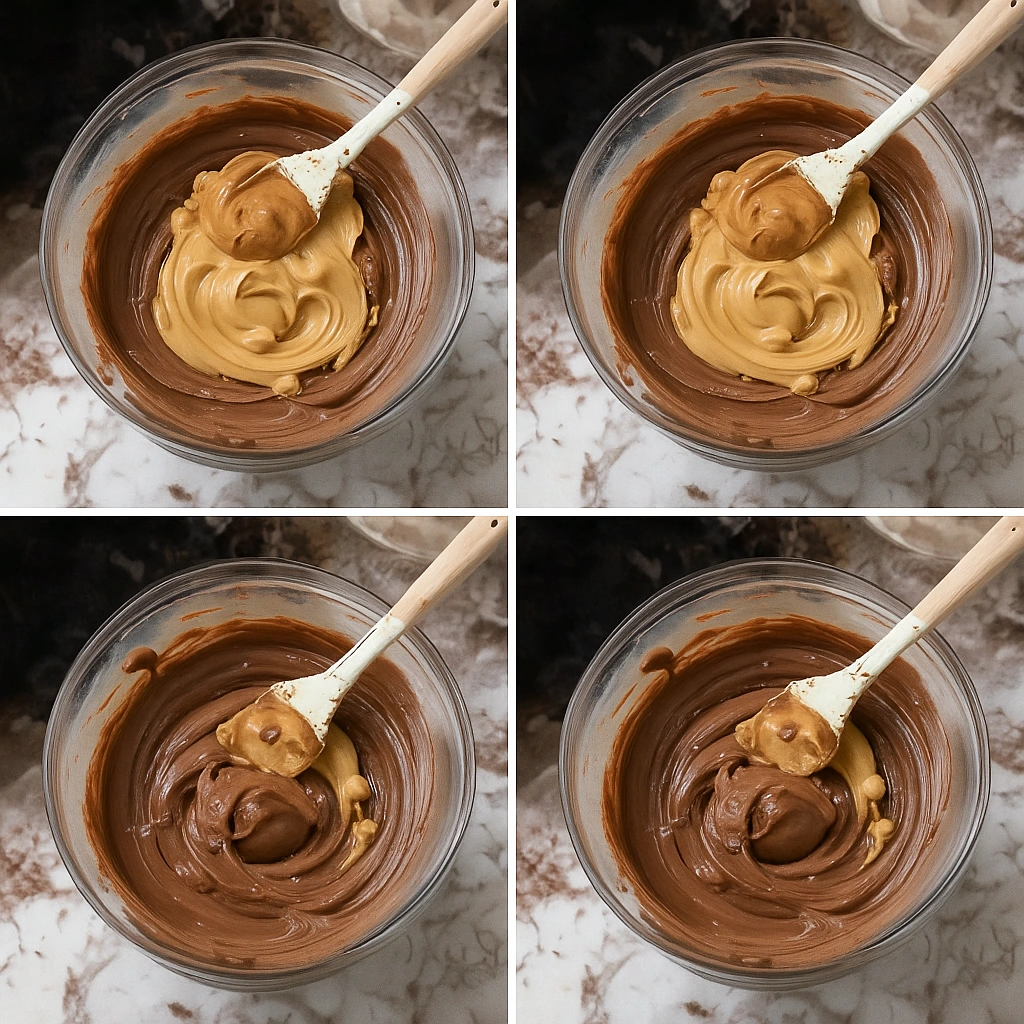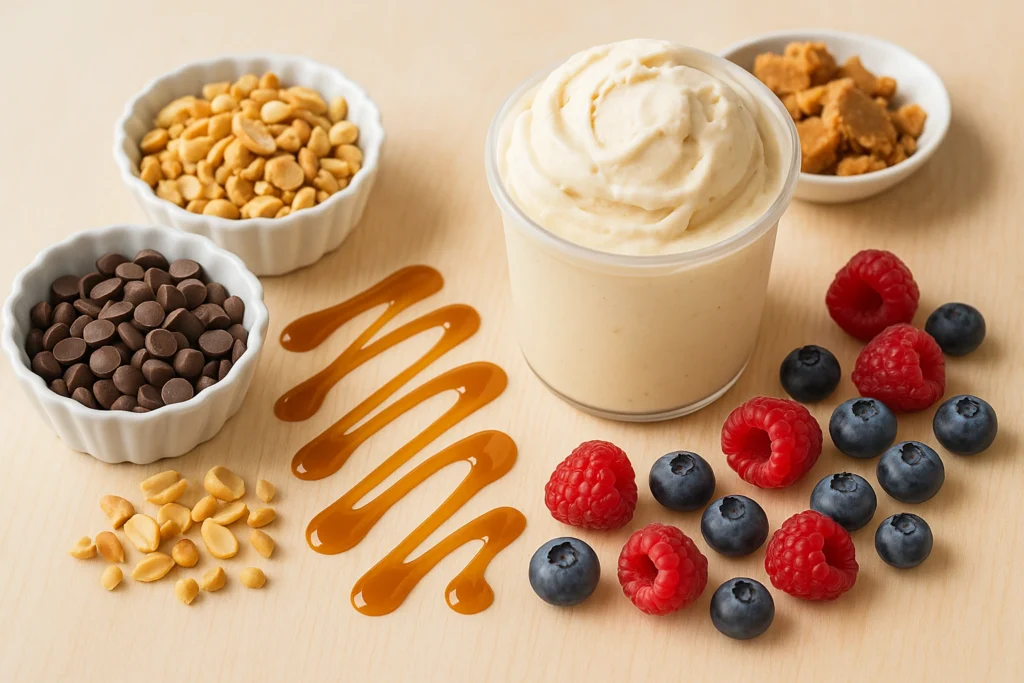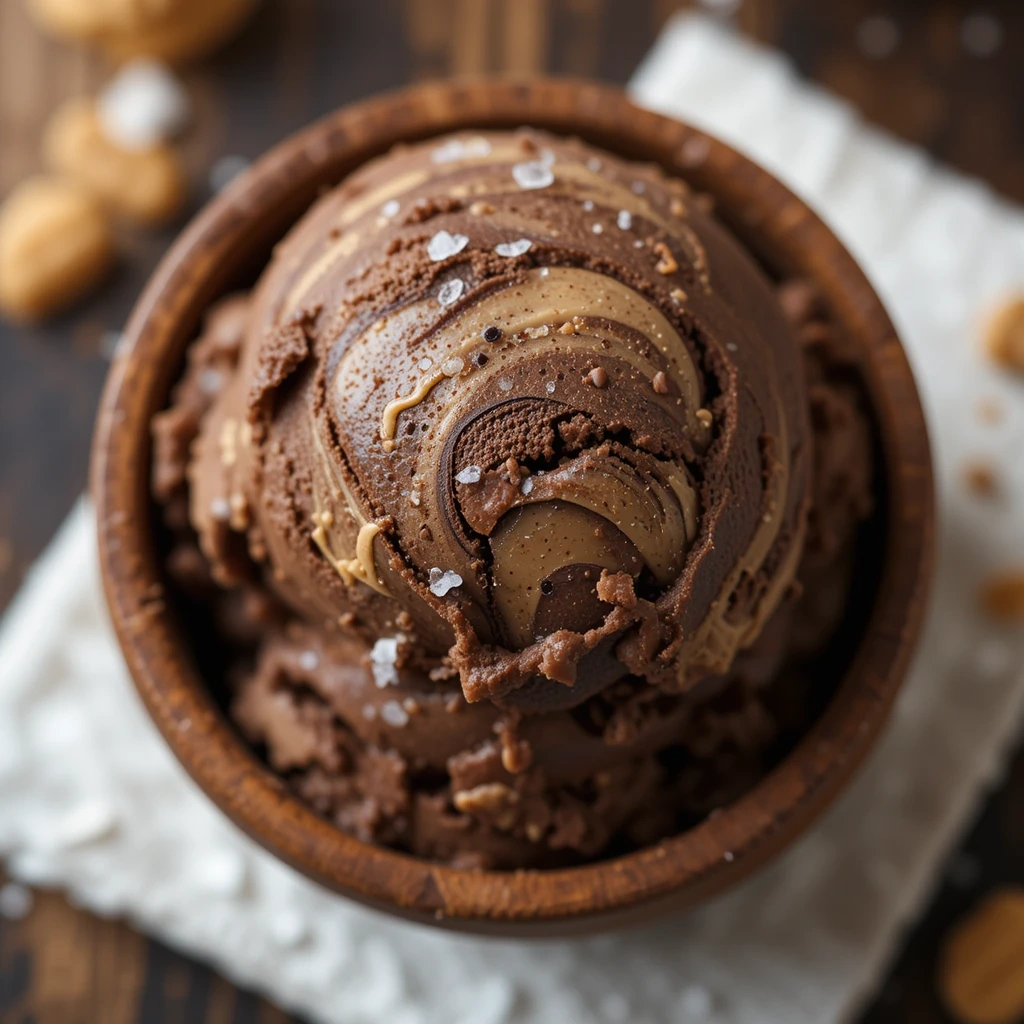A Sweet Childhood Memory
Growing up, the aroma of freshly baked cookies or the warmth of a homemade apple pie always brought a special magic. Yet, among these cherished memories, one stands out: my grandmother’s legendary Chocolate Peanut Butter Swirl Ice Cream. Its rich, velvety chocolate base, intertwined with ribbons of creamy, salty peanut butter, was a symphony of flavors. Each spoonful was a journey back to carefree summer afternoons, filled with laughter and the simple joy of a perfect dessert. This wasn’t just a treat; it was a testament to transforming simple ingredients into something extraordinary, a culinary masterpiece born from love and a touch of kitchen wizardry. It’s this essence of homemade goodness, combined with the irresistible allure of chocolate and peanut butter, that we explore in this article. We will delve into the fascinating histories of these beloved ingredients, uncover the secrets behind crafting the perfect no-churn ice cream, and provide insights into recreating this decadent delight in your own kitchen. This article serves as your ultimate guide to understanding, appreciating, and mastering the art of Chocolate Peanut Butter Swirl Ice Cream, a dessert that truly embodies comfort and indulgence.

The Rich History of Our Beloved Ingredients
The Ancient Origins of Ice Cream
The journey of ice cream stretches back into antiquity. Early forms of chilled desserts were savored in ancient civilizations like China, Mesopotamia, Greece, and Rome, often made from snow, fruits, and honey. A significant breakthrough came with the discovery of mixing ice with salt, allowing for smoother, scoopable frozen treats. Ice cream was introduced to Europe and later gained popularity in the American colonies, with figures like Thomas Jefferson and George Washington being enthusiasts. The industrial revolution and the invention of the ice cream cone further democratized this dessert, solidifying its place as a global culinary icon [1].
Table of Contents
The Nutty Narrative of Peanut Butter
The story of peanut butter spans continents and centuries, from the Incas grinding peanuts into a paste to its modern-day staple status. Dr. John Harvey Kellogg patented a process for making peanut butter in 1895, marketing it as a healthy alternative to meat. Joseph Lambert further developed machinery for large-scale production, reducing prices. During World War I, peanut butter became a crucial protein source due to meat rationing. Joseph Rosefield’s 1921 patent for partial hydrogenation stabilized peanut butter, preventing oil separation and extending shelf life, paving the way for national brands. The widespread availability of sliced bread cemented the peanut butter and jelly sandwich as an American icon. George Washington Carver also significantly promoted peanut cultivation for soil enrichment and economic opportunity [2].
The Enduring Legacy of Chocolate
The history of chocolate dates back over 5,000 years to Mesoamerican civilizations like the Olmecs, Mayas, and Aztecs, who revered the cacao bean and consumed it as a bitter, ceremonial beverage. Chocolate arrived in Europe in the 16th century, first in Spain, then spreading as a luxurious indulgence once sweetened. The 19th century saw major transformations: Coenraad van Houten’s cocoa press and
Dutch processing, followed by Rudolf Lindt’s conching machine, revolutionized chocolate production, making it smoother and more accessible. Major companies like Cadbury, Mars, and Hershey further mass-produced chocolate, cementing its global popularity. Today, ethical and environmental concerns in cacao production highlight the growing demand for fair-trade chocolate [3].
Crafting Culinary Magic: The Art of No-Churn Ice Cream
Understanding the Nocturne Method
Homemade ice cream offers unmatched freshness and customization. The no-churn method democratizes this art, eliminating the need for a specialized ice cream maker. This ingenious technique relies on whipped heavy cream and sweetened condensed milk to create a rich, creamy base that freezes beautifully without continuous churning. Traditional ice cream makers incorporate air and break down ice crystals; the no-churn method achieves similar results by utilizing ingredients that inherently contribute to a smooth texture. Whipped heavy cream traps air, providing a light, airy texture, while sweetened condensed milk acts as an anti-freeze due to its high sugar content, inhibiting large ice crystal formation and contributing to overall creaminess. The process involves whipping cold heavy cream to stiff peaks, then gently folding it into the sweetened condensed milk, often flavored with vanilla and a pinch of salt. Gentle folding is crucial to maintain the air bubbles. The mixture is then frozen for several hours, or preferably overnight, resulting in a consistently delicious and easy-to-make dessert [4].
The Perfect Swirl: A Recipe for Indulgence

This decadent no-churn ice cream transforms simple ingredients into a creamy, indulgent dessert with minimal effort. The rich chocolate base blends beautifully with swirls of smooth, salty peanut butter for a balanced, satisfying treat.
Start by combining 2 ½ cups cold heavy cream, ¾ cup unsweetened cocoa powder, and 2 teaspoons instant espresso powder (optional, for depth). Whip the mixture until soft peaks form, incorporating air for a light texture. Gently beat in ½ cup maple syrup (or honey), 1 tablespoon vanilla extract, and 1 teaspoon flaky salt. Avoid overwhipping to maintain a smooth consistency.
Once the base is ready, fold in 1 cup cold creamy peanut butter in dollops. Don’t fully blend it in—this will create beautiful, flavorful ribbons of peanut butter throughout the chocolate base.
Pour the mixture into a loaf pan or freezer-safe container. Smooth the top, cover tightly to prevent ice crystals, and freeze for at least 6 hours or overnight.
Before serving, let the ice cream sit at room temperature for 5–7 minutes to soften slightly. Scoop and enjoy the perfect blend of chocolate richness and peanut butter creaminess.
Elevating Your Homemade Ice Cream Experience
Tips for Achieving Creamy Perfection

Making no-churn ice cream at home is not only easy, but incredibly satisfying. To create a smooth, creamy texture and avoid unwanted iciness, a few simple tips make all the difference.
Start with high-quality, full-fat ingredients. The richness of heavy cream is essential for creating a luxurious texture and helps reduce the formation of ice crystals. It’s also important to keep everything well chilled. A cold base and cold mixing tools help maintain structure and prevent melting during preparation.
Before freezing, make sure your mixture is as cold as possible. Some like to let the ice cream base rest in the fridge for a few hours before freezing—this can improve both the texture and flavor.
When adding mix-ins like chocolate chips, chopped nuts, or fruit, make sure they are small and cold. This prevents them from sinking or affecting the temperature of the mixture. Gently fold them in at the very end, just before transferring your ice cream to the container.
To keep the ice cream creamy during storage, press a piece of parchment paper or plastic wrap directly on the surface before sealing. This minimizes air exposure and helps prevent freezer burn, keeping your ice cream smooth and scoopable every time.
Creative Variations and Flavor Pairings
Beyond the classic Chocolate Peanut Butter Swirl, homemade no-churn ice cream offers endless possibilities for customization. Experiment by altering the base flavor: omit cocoa for vanilla, or add instant coffee for coffee ice cream. Fruit purées can create vibrant fruit-infused ice creams. Mix-ins add texture and visual appeal; consider chopped roasted peanuts, mini chocolate chips, crushed cookies, brownie pieces, or pretzels for sweet and salty contrast. Ensure mix-ins are small and chilled. Swirls of caramel, fudge, or fruit compote can add complexity and visual interest. Alcohol, used sparingly, can enhance flavor and create a softer consistency by lowering the freezing point. Finally, thoughtful presentation elevates the experience: garnish with fresh fruit, chocolate sauce, nuts, or whipped cream. Use your ice cream in sundaes, milkshakes, or ice cream sandwiches. These variations transform homemade ice cream into a canvas for culinary expression [5].
Frequently Asked Questions (FAQs)
Here are some common questions about making chocolate peanut butter swirl ice cream at home:
How do I make chocolate peanut butter ice cream without an ice cream maker?
The no-churn method is ideal. Whip cold heavy cream to stiff peaks, then gently fold it into sweetened condensed milk. For chocolate peanut butter swirl, incorporate cocoa and instant espresso into the cream, then swirl in cold creamy peanut butter before freezing. This creates a creamy texture without churning
What ingredients are needed for chocolate peanut butter ice cream?
Core ingredients include cold heavy cream, unsweetened cocoa powder, sweetened condensed milk, vanilla extract, and creamy peanut butter. Optional additions are instant espresso and flaky salt. Ensure all dairy and peanut butter are well-chilled
How long does it take to freeze chocolate peanut butter ice cream?
It typically needs at least 6 hours to set properly, or overnight for optimal consistency. Before serving, let it sit at room temperature for 5-7 minutes to soften for easier scooping
Can I use crunchy peanut butter for this recipe?
es, crunchy peanut butter adds an extra textural dimension and a delightful bite. The swirling method remains the same: gently fold dollops of cold crunchy peanut butter into the chocolate base.
How do I get a perfect swirl in the ice cream?
Ensure your peanut butter is cold and firm. Drop spoonfuls over the chocolate base, then use a knife or skewer to gently drag through in a swirling motion. Avoid over-mixing to maintain distinct swirls.
How do I store homemade ice cream to keep it creamy?
Store in an airtight container, covering the surface directly with plastic wrap to prevent air exposure and ice crystals. A small amount of alcohol or corn syrup/honey can also help maintain softness by lowering the freezing
A Symphony of Flavors
Chocolate Peanut Butter Swirl Ice Cream is a testament to classic flavor combinations and accessible homemade delights. We explored the rich histories of ice cream, peanut butter, and chocolate, from ancient origins to modern staples. The no-churn method, using whipped heavy cream and sweetened condensed milk, yields a creamy, satisfying frozen treat without specialized equipment. The detailed recipe guides you in crafting this decadent ice cream, emphasizing cold ingredients and gentle folding for perfect texture. Beyond the recipe, we provided tips for creamy perfection and explored endless variations and flavor pairings. Homemade ice cream offers a canvas for culinary creativity. Embrace the joy of making this chocolate peanut butter symphony, and let each scoop transport you to delightful flavors and cherished memories.

